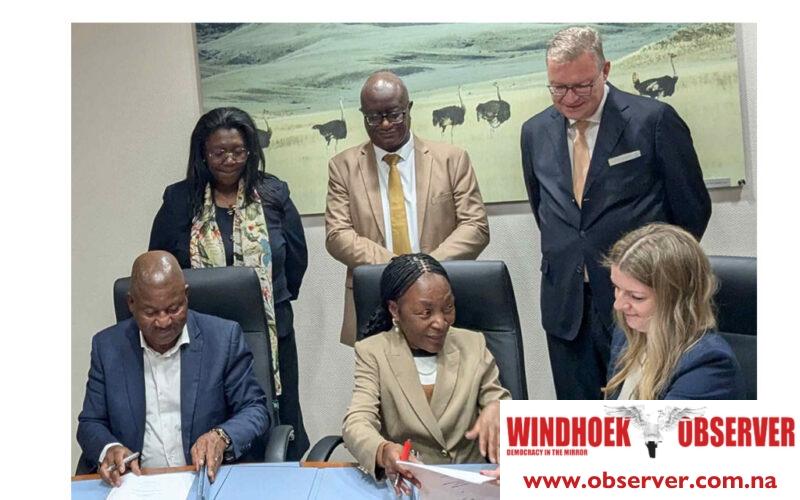Niël Terblanché
The Namibian Government, in partnership with NamWater and the German Development Bank (KfW), has entered into a N$1.5 billion concessional loan agreement aimed at upgrading the country’s ageing bulk water supply infrastructure.
The agreement was signed in Windhoek by finance minister Ericah Shafudah, NamWater’s chief executive officer, Abraham Nehemia, and a KfW representative
The German ambassador to Namibia, Thorsten Hutter, was also present at the ceremony.
Shafudah described the loan as a crucial addition to national budget efforts to secure the country’s water supply.
“This agreement will complement our budgetary resources in ensuring the rehabilitation and expansion of water infrastructure, particularly in areas most affected by water stress,” she said.
Ambassador Hutter agreed to this sentiment and said that the partnership reflects Namibia’s ongoing commitment to sustainable water management.
He said the projects will not only increase resilience to drought but also contribute to a more inclusive and secure water future.
Nehemia welcomed the agreement as a major step in the country’s infrastructure development.
“This is a defining moment for Namibia as we invest in the future of water security. Robust and resilient water infrastructure is urgently needed to meet rising demand and protect livelihoods across the country,” he said.
He added that the funding will be channelled into the second phase of the Namibia Water Sector Support Program (WSSP II), which aims to reduce water losses, expand access to clean water, and strengthen sustainable water management.
The Central North and North-Eastern regions of Namibia have been identified as priority areas for intervention, given the scale of water scarcity and infrastructure limitations in these zones.
One of the central initiatives under the new funding is the Omundaungilo–Omutsegwonime Bulk Pipeline Scheme.
According to Nehemia, the project will include the construction of about 130 kilometres of new water pipelines, development of boreholes and wellfields, as well as the erection of reservoirs, booster stations, and treatment facilities.
Nehemia said the scheme is expected to bring potable water to more than 27,000 people in the Ohangwena and Oshikoto regions, improving public health and facilitating economic development.
He also announced that the programme will address supply constraints along the Oshakati–Ondangwa–Oshali–Omuthiya–Omutsegwonime pipeline corridor.
“In addition, compact desalination units will be introduced in remote rural areas to treat saline groundwater, in collaboration with the Ministry of Agriculture, Water, Fisheries and Land Reform,” he said.
Nehemia added that modernising ageing infrastructure will help the country respond more effectively to climate-related water stress.
“WSSP II will not only rehabilitate existing systems but also introduce new technologies aimed at improving the efficiency and sustainability of water delivery,” he said.
He added that NamWater, with financing from the loan, seeks to ensure reliable water access for both urban and rural communities while building the necessary resilience to confront worsening climatic conditions and growing water demand.




